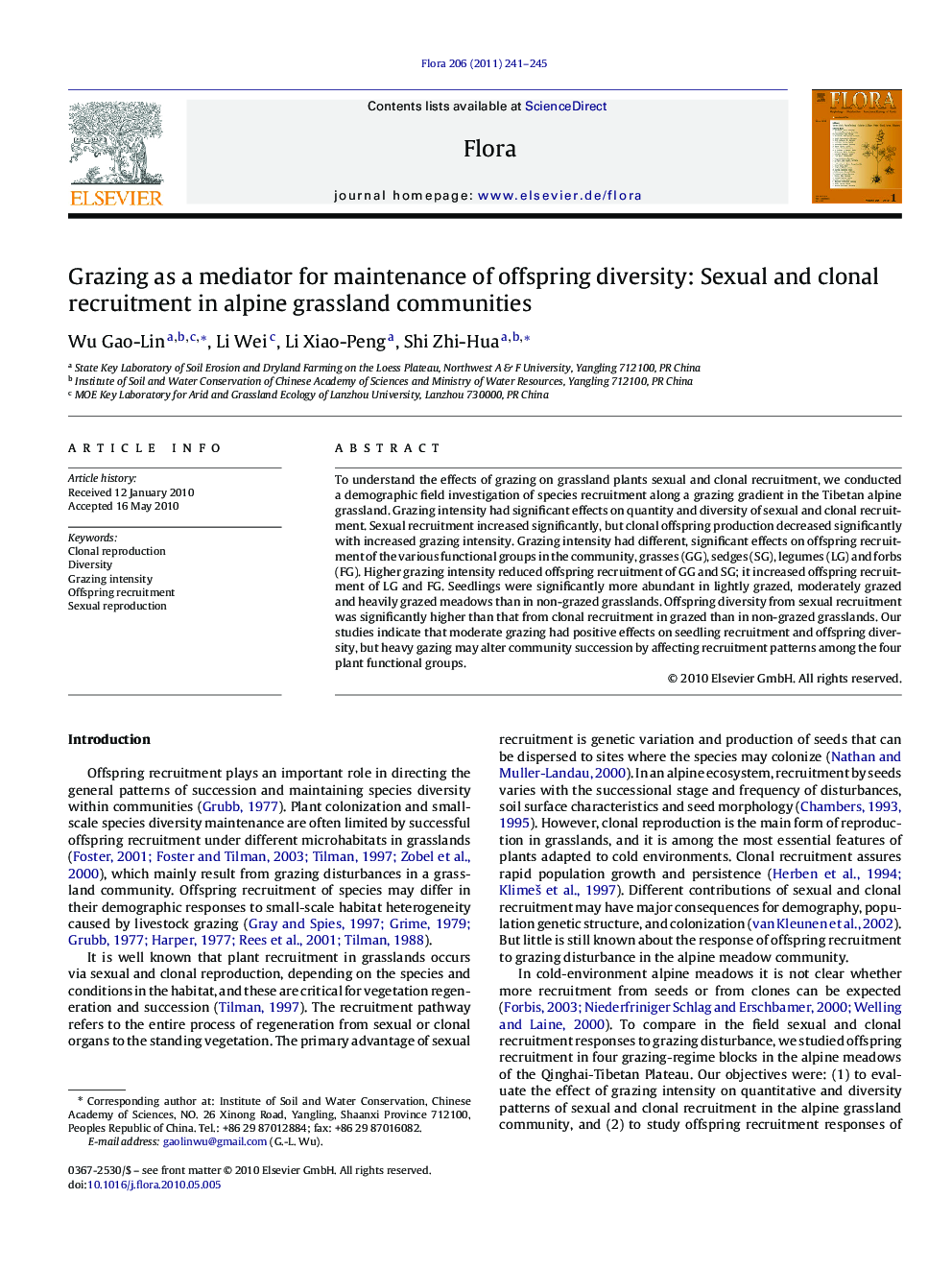| Article ID | Journal | Published Year | Pages | File Type |
|---|---|---|---|---|
| 10939229 | Flora - Morphology, Distribution, Functional Ecology of Plants | 2011 | 5 Pages |
Abstract
To understand the effects of grazing on grassland plants sexual and clonal recruitment, we conducted a demographic field investigation of species recruitment along a grazing gradient in the Tibetan alpine grassland. Grazing intensity had significant effects on quantity and diversity of sexual and clonal recruitment. Sexual recruitment increased significantly, but clonal offspring production decreased significantly with increased grazing intensity. Grazing intensity had different, significant effects on offspring recruitment of the various functional groups in the community, grasses (GG), sedges (SG), legumes (LG) and forbs (FG). Higher grazing intensity reduced offspring recruitment of GG and SG; it increased offspring recruitment of LG and FG. Seedlings were significantly more abundant in lightly grazed, moderately grazed and heavily grazed meadows than in non-grazed grasslands. Offspring diversity from sexual recruitment was significantly higher than that from clonal recruitment in grazed than in non-grazed grasslands. Our studies indicate that moderate grazing had positive effects on seedling recruitment and offspring diversity, but heavy gazing may alter community succession by affecting recruitment patterns among the four plant functional groups.
Related Topics
Life Sciences
Agricultural and Biological Sciences
Ecology, Evolution, Behavior and Systematics
Authors
Wu Gao-Lin, Li Wei, Li Xiao-Peng, Shi Zhi-Hua,
